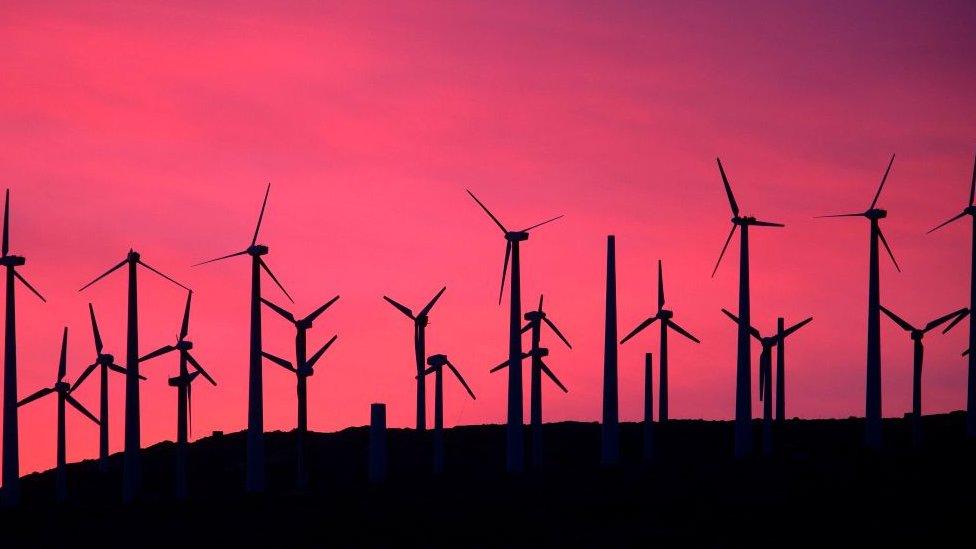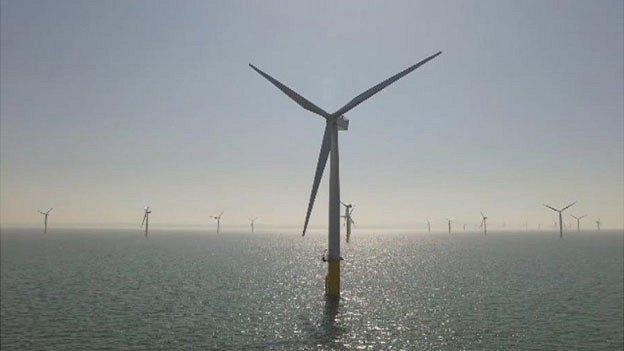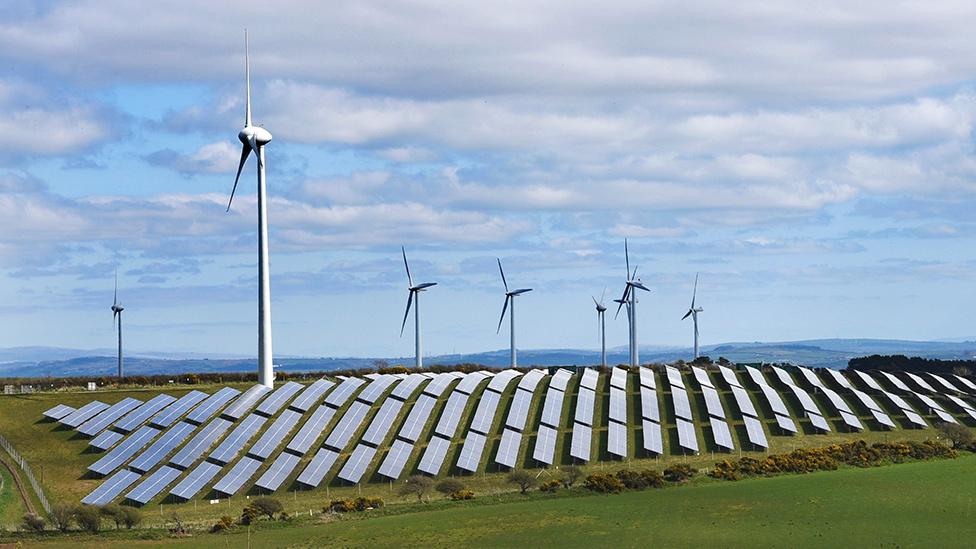Renewable energy: Why lockdown means we're using more of it
- Published
- comments

There's some good news for the planet - we're using more renewable energy than ever before.
There are two types of energy: non-renewable and renewable, and the second is much more friendly to earth.
They've got a really important part to play in the government's aim to cut carbon emissions to almost zero by 2050.
New reports show that renewable energy usage is rising, and that's down to a few things.
Renewable energy is made from resources that nature will replace, like wind, water and sunshine.
Renewable energy is also called "clean energy" or "green power" because it doesn't pollute the air or the water.
What do the figures say?

Storms like Dennis helped to power wind farms earlier in the year
Renewable energy made more than 40% of Britain's power in the first three months of the year - overtaking fossil fuels for the very first time.
Wind farms were the biggest source of energy, and experts think winter storms in February helped make it the first month on record when more electricity was produced by wind farms than gas-fired power stations.
There are only three coal plants left in Britain, and the country is currently in a record coal-free run of more than 40 days!
Why is this happening?

There's less electricity being used across the country - in places like schools - since lockdown began
Research by Imperial College London shows that people are using less power in the week since lockdown began in late March.
Although we're all at home more, lots of machinery, computers, lights and heaters that were being used in offices and schools have all been turned off.
That means electricity demand has fallen to its lowest levels since 1982.
The research says that if a small share of people continue to work from home, there could be a lasting impact on electricity demand for years to come.
Are there plans to make more renewable energy sources?

Gwynt y Môr is the fifth largest windfarm in the world
Because of lockdown, there will be a slight delay in building new renewable energy sources.
Countries are building things at a much slower rate - but that doesn't mean they're stopping altogether.
More large offshore wind farms are going to be built this year including an extension to an existing site off the coast of North Wales.
Gwynt y Môr is the fifth largest operating offshore windfarm in the world and produces enough electricity to supply around 400,000 households every year!
Up to 107 new turbines could be added to the farm, and the company behind it said it'd provide lots of environmental benefits.
- Published26 July 2017

- Published14 October 2019

